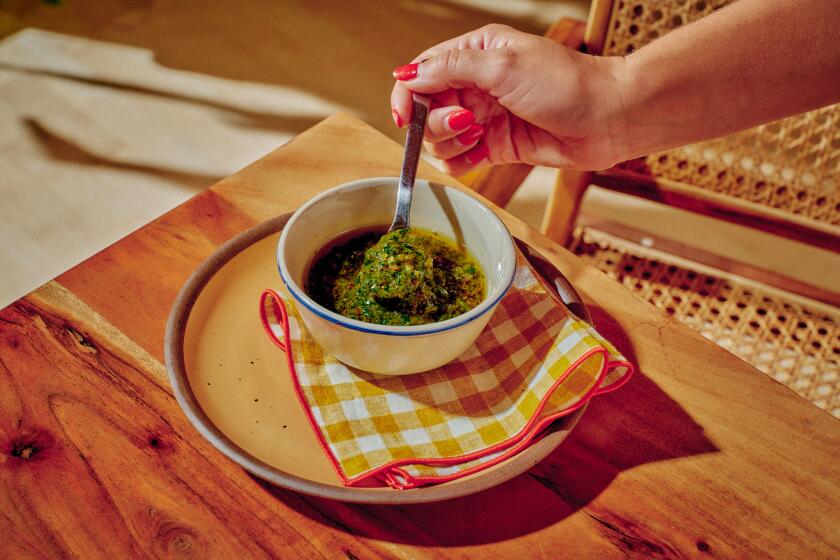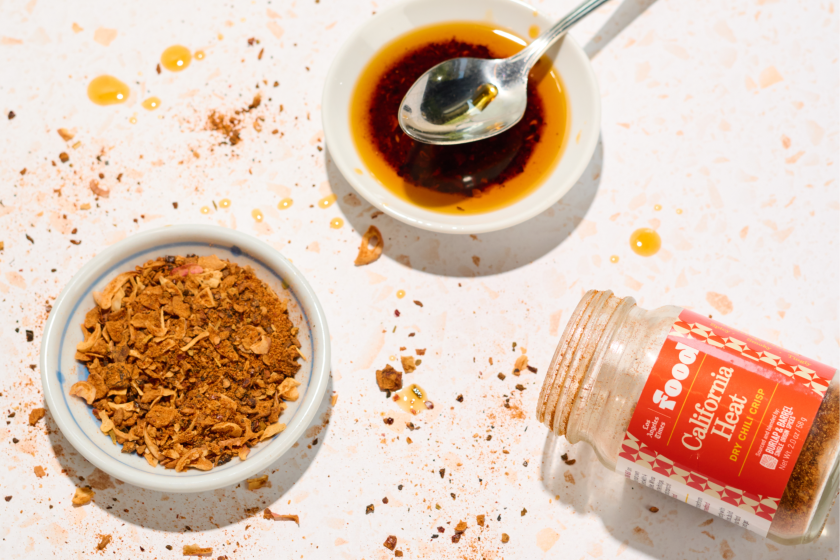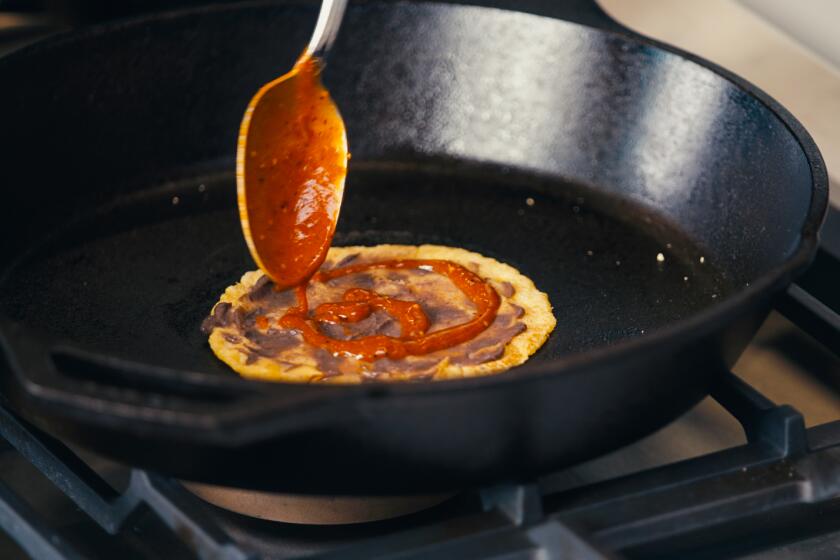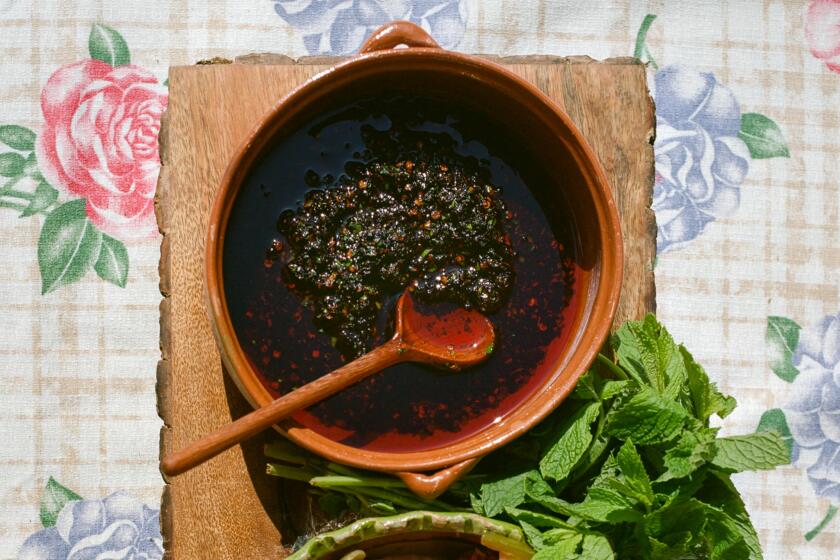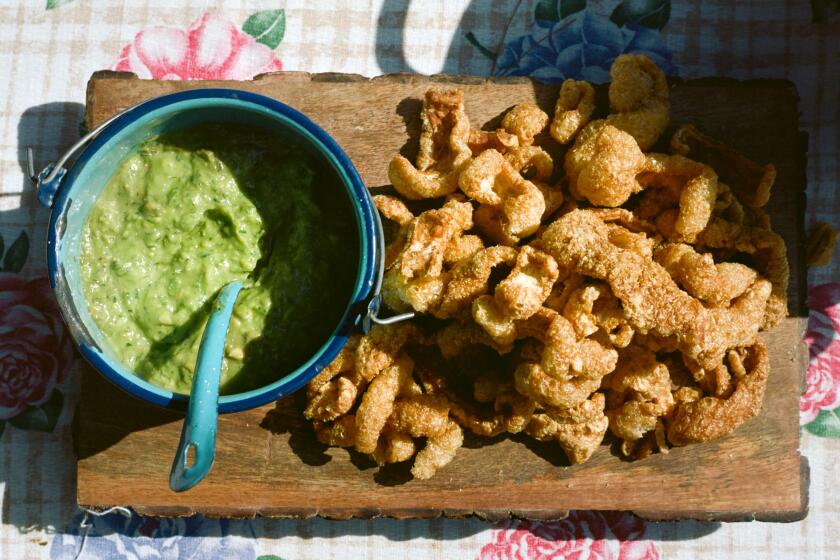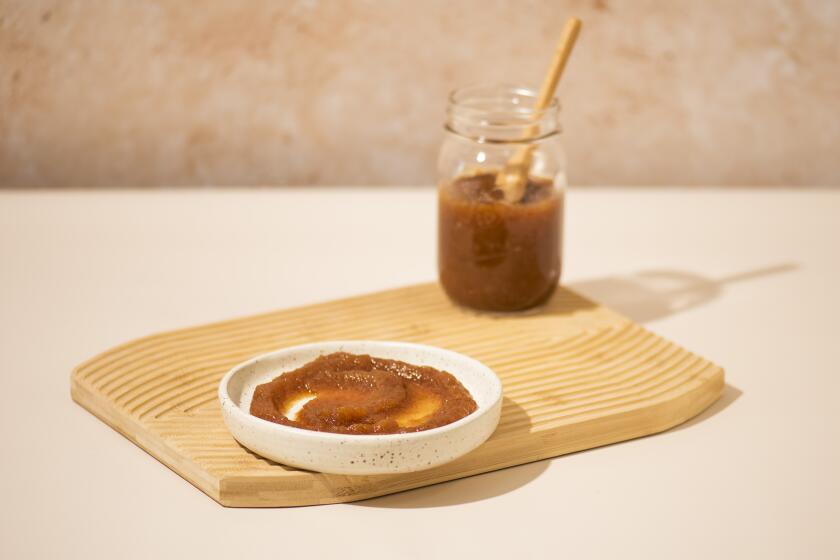Cocktail sauce
Cocktail forks and crab crackers are at the ready. The space in the center of your table is cleared, and everyone in the restaurant looks your way. Something big is about to happen.
And then it arrives -- a tower of ice-filled platters of seafood, three tiers stacked high. Those frosty-silvery platters overflow with a dozen or more oysters on the half shell, littleneck and cherrystone clams too; Dungeness crab; a split Maine lobster; tiny periwinkles; steamed mussels; big, succulent poached shrimp; and pretty bay scallops in their pink-tinged shells. Tucked in between are wedges of lemon, and served on the side are little bowls of cocktail sauce, creamy mayonnaise, and perfectly vinegary, shallot-spiked mignonette. It’s a plateau de fruits de mer (literally, a platter of fruits of the sea), and in the golden light of a brasserie, with a glass of Champagne or Chablis, you feel like, well, the world is your oyster -- and you happen to be quite the ostreaphile.
Oyster (and crab and lobster and mussel . . .) lovers can rejoice. The plateau de fruits de mer, a traditional French feast, is showing up all over L.A., on the menu at Hungry Cat in Hollywood (where a raw-bar expansion is in the works), the Water Grill downtown, Fraiche in Culver City and just-opened Comme Ca in West Hollywood. And this is the perfect moment to partake in a plateau; we’re heading straight into full-swing oyster season as more and more varieties hit their peak.
In New York, they’ve been big for years, most notably at Balthazar and Blue Ribbon, and now at long last they’re taking off in L.A. Maybe it’s something in the air. Eating out suddenly feels more cosmopolitan, and diners want some elegant excess: a martini before dinner (gin, of course; it happens to go great with oysters) and a plateau just to kick things off. This is food for the swells.
At Comme Ca, the swells are out en masse, and the shellfish platter is bountiful. “I just had to have it on the menu,” says chef-owner David Myers. “It’s so spectacular.” Here the spectacle might be either the plateau or the grand plateau, both served on a single large ice-filled, seaweed-strewn platter, with Malpeque and Skookum oysters, clams from Prince Edward Island, stone crab claws, Maine lobster, shrimp and mussels. Alongside comes mignonette, cocktail sauce and a bright tarragon mayonnaise.
At Fraiche in Culver City, the grand plateau is a three-tier affair (the petit plateau has two tiers). Right now it includes three types of oysters (Blue Point, Kumamoto and Kusshi); littleneck clams; shrimp; lobster; calamari salad dressed with olive oil and lemon juice, red onions, chives and a little red bell pepper; albacore ceviche marinated with lime juice, tomatoes, red onions, mint, and orange and lemon zest; and mussels with a cucumber vinaigrette. With the mignonette and cocktail sauce, there’s freshly grated horseradish (great for oysters).
The Water Grill pays meticulous attention to everything that’s going on the plateau. The lobster’s perfectly succulent, the shrimp plump and tender, and the oysters are a thoughtful selection of what’s most wonderful at the moment. Care is taken to make sure their liquor’s not spilled (and no shell fragments in there either). On a recent visit, a friend and I sidled up to the bar to tuck into an extravaganza of Raspberry Point oysters, littleneck clams, Mexican white shrimp, steamed mussels, Dungeness crab claws, lobster and periwinkles -- diminutive saltwater snails that were propped up in the ice on little sticks.
Our neighbor at the bar kept looking over, longingly, then ordered an adorable plateau for one that came on a napkin-lined glass plate, topped with ice and his own mini-extravaganza of shellfish. (When you order it at the table for more than one or two people, the traditional aluminum platter is used, and a tier might be added.)
The excellent oyster selection might include buttery, full-bodied Watch Hills; mild, crisp Sinkus; sweet Totten Inlets; those pristine Raspberry Points; briny Olde Salts from Virginia; or crisp-bright Coromandels.
Any way you like it
So is it a first course or a main course? Traditionally, the plateau is served as an appetizer, but with a salad and bread, it’s a fantastic main too. “Either way works,” says former Bastide chef Alain Giraud, who is opening a brasserie in Santa Monica, complete with oyster bar and, of course, plateaux de fruits de mer. “As long as it’s conducive to a social dinner.”
And what makes a great plateau? It should convey a sense of abundance and have a wide variety of seafood: shrimp, lobster, crab, oysters, clams, periwinkles and scallops. Enough of everything for everyone. Plateau de fruits de mer has always been about excess (it dates back to 17th century aristocrats). So no skimping on the oysters, please.
“I love clams, but you should have more oysters than clams” on a plateau, Comme Ca’s Myers says. “How many depends on the size of the oysters.” (As for those clams, right now he has littlenecks, but “I want to get some varieties from Japan too; their flavors are unreal.”)
“It should be beautiful,” says Water Grill executive chef David LeFevre. “When it comes to the table, people should say, ‘Oh my God.’ I like the seafood to look alive, so you see the heads of the lobsters.”
And, of course, the seafood has to be absolutely fresh and pristine and perfectly prepared, nothing overcooked or undercooked. The lobster shouldn’t be tough. The shrimp, even with the shell on, should be deveined. And the oysters’ adductor muscles should be cut so that they just slide out. Who wants to struggle with loosening the oyster from its shell and lose all of that precious oyster liquor?
In fact, everything should be easy to eat. Crab and lobster claws should be cracked, for example. “The guest still gets some of the fun of digging in there,” LeFevre says, “but you don’t want it to be so hard that it becomes cumbersome.”
And you have to have the proper accouterments. Beyond the classics, LeFevre also sometimes makes a stone-ground mustard sauce for crab and a togarashi-yuzu (Japanese pepper and citrus) sauce for scallops. His house-made mayonnaise is tinged with saffron. Myers serves his plateau with thin slices of dark bread and sweet butter, an old-school European tradition.
So what’s the best place in town to have a plateau? The Water Grill’s stands out for the fabulous quality of the oysters, the presentation and attention to detail. But hard as it may be to believe, you can make an even more dazzling one at home.
One reason is the wide variety of incredible seafood you can order from specialty purveyors -- imagine crowning a plateau with a sea urchin, spines and all, topped with its fantastic roe, just scooped out of the shell. You can also get gorgeous sea snails, periwinkles and cockles.
It’s easy to cook everything (everything that’s not raw, that is) perfectly, and you can customize it to include exactly what you want. (Love oysters but dislike raw clams? Leave ‘em out!) The mussels on restaurant plateaux are often bland or over-vinegared; at home you can pay the proper attention and get them just right.
Some assembly required
It may seem like a lot to take on, but it’s a lot easier than you think once you assemble all the seafood and procure the hardware (which also can be improvised).
First pick up the hardware: deep aluminum trays that hold a lot of ice and steel stands for stacking the trays. But you could also use any large platter. Call for any of the seafood that needs to be special-ordered, and make sure you have a shucking knife. And lay in plenty of crushed ice.
When preparing seafood, “we go by the three ‘Cs,’ ” LeFevre says. “Cold, cut and clean.” LeFevre washes shellfish such as oysters and clams in crushed ice, not water. The clams and oysters get tumbled around in the ice, which acts as an abrasive to remove debris from the shells and keeps them cold.
One big pot of court bouillon -- a light broth that’s quickly made from water, white wine and aromatic herbs and vegetables -- is all you need for any seafood that’s going to be cooked: lobster, crab, shrimp, mussels, cockles, periwinkles, sea snails. The trickiest thing to do is shucking the oysters. But once you get the knack, not even that’s hard.
The cooking method is based on Thomas Keller’s from his cookbook “Bouchon”: The shellfish is placed in boiling court bouillon, and then the pot is removed from the heat to allow the seafood to finish cooking; no ice bath necessary. First you cook the lobster and shrimp, then the crab, then the mussels (and cockles and sea snails, if you have them). You use the same batch of court bouillon for all of it, then chill the shellfish. It can all be cooked up to a day in advance.
Whipping together the condiments is easy. Aioli, made with garlic, is often too overpowering with delicate seafood. But a creamy, luscious mayonnaise (especially one with lemon zest added) is delicious for the crab, lobster and shrimp. Salty-tangy-sweet cocktail sauce, of course, is great for shrimp too. Mignonette for oysters is a no-brainer, though many oyster-lovers use only lemon. Meyer lemons, which will be in season soon, are even better. In “A Geography of Oysters,” author Rowan Jacobsen also recommends Japanese umeboshi vinegar, made from pickled plums, for oysters -- just a drop on each.
When you’re almost ready to serve the plateau, shuck the oysters and clams. To decorate the platter, you can lace the crushed ice with kelp (order it from your fishmonger) or plant tufts of parsley in it.
For a dramatic platter topper, you could use the shell of a Dungeness crab body, maybe some caviar served in a tiny bowl, or even better, that sea urchin. You can special-order live sea urchin from seafood markets such as Fish King in Glendale and Santa Monica Seafood.
Use kitchen shears to cut a circle out of the top (take care with the spines), pour off the liquid inside and use a teaspoon to carefully scoop out the rich orange roe (uni). Rinse out the shell, fill it with crushed ice and lay the uni on top. Just out of the shell, it’s as fresh as it can be, almost lightly sweet, but profoundly of the sea.
Now that’s dramatic.
In a bowl, mix together the ketchup, Worcestershire, Tabasco, brandy, vinegar, lemon juice, horseradish and salt. Stir to thoroughly combine. Serve cold.
Get our Cooking newsletter.
Your roundup of inspiring recipes and kitchen tricks.
You may occasionally receive promotional content from the Los Angeles Times.










